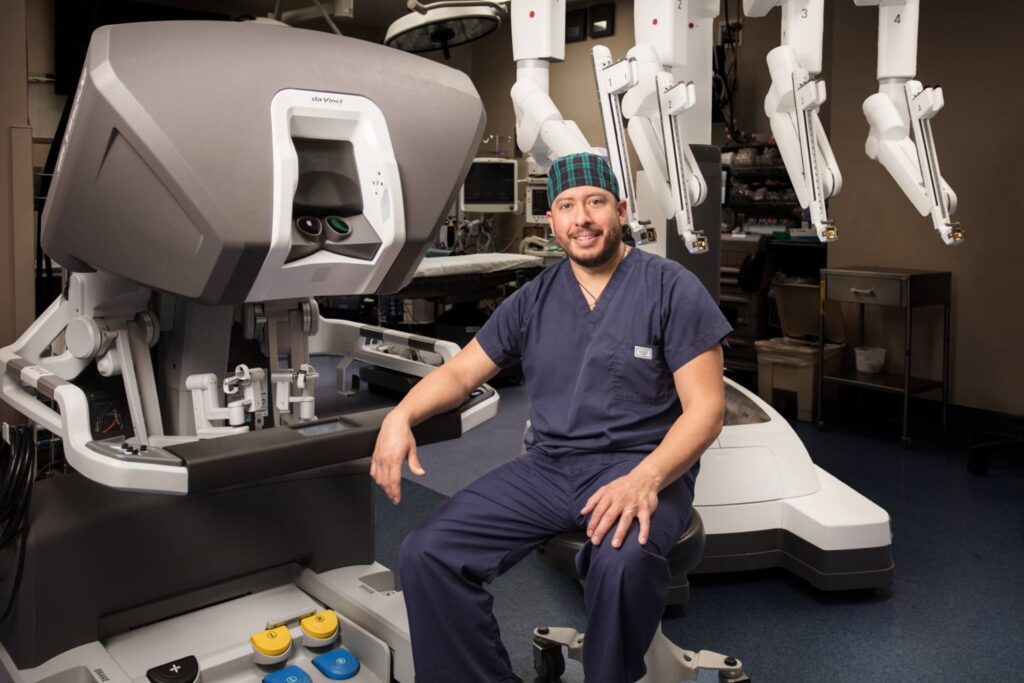
What Are the Benefits of Robotic-Assisted Surgery?

Robotic-assisted surgery has revolutionized the medical field, offering unprecedented precision and control in various surgical procedures. In the OBGYN industry, this advanced technology has significantly improved patient outcomes, transforming women’s healthcare landscape.
History and Development
Robotic-assisted surgery originated in the late 20th century with the development of systems like the Da Vinci Surgical System. Initially designed for cardiac procedures, its applications quickly expanded to include various surgical fields, including OBGYN. Key milestones include FDA approval in 2000 and widespread adoption due to its proven efficacy and safety.
How Robotic-Assisted Surgery Works
A typical robotic-assisted surgery involves a surgeon operating from a console and controlling robotic arms with surgical instruments. The robot translates the surgeon’s hand movements into precise actions inside the patient’s body. This process offers unparalleled dexterity and control, allowing intricate procedures to be performed with minimal invasiveness.
Advantages of Robotic-Assisted Surgery
- Precision and Accuracy – One of the primary advantages of robotic-assisted surgery is its enhanced precision. The ro-botic system allows for micro-movements that surpass human capability, reducing the mar-gin of error and improving surgical outcomes.
- Minimally Invasive Approach – Robotic-assisted surgery typically requires smaller incisions compared to traditional meth-ods. This minimally invasive approach results in less scarring, reduced pain, and faster pa-tient recovery.
- Reduced Risk of Complications – The precision and control offered by robotic systems significantly lower the risk of complica-tions. Patients experience reduced blood loss, fewer infections, and safer surgical proce-dures.
- Shorter Recovery Time – Due to robotic-assisted surgery’s minimally invasive nature, patients benefit from shorter hospital stays and quicker recovery periods. This allows them to return to daily activities much sooner than traditional surgery.
- Improved Visualization – The high-definition, 3D visualization provided by robotic systems enhances the surgeon’s ability to see and navigate complex anatomical structures. This improved visualization is cru-cial for delicate procedures in the OBGYN field.
Patient Benefits
- Increased Safety – Due to its precision and control, robotic-assisted surgery offers a higher degree of safety. Pa-tients can feel confident in the reduced risk of complications and better overall surgical out-comes.
- Better Cosmetic Results – The smaller incisions required for robotic-assisted surgery result in minimal scarring, leading to better cosmetic outcomes for patients concerned about the visual impact of surgery.
- Faster Return to Daily Life – With quicker recovery times, patients can return to work, family life, and other activities much sooner. This rapid recovery is a significant benefit for many women who are balancing multiple responsibilities.
Surgeon Benefits
- Enhanced Ergonomics – Operating from a console reduces surgeons’ physical strain and fatigue, allowing them to perform complex procedures more comfortably and for longer periods.
- Greater Surgical Control – The robotic system’s precise movements and advanced controls give surgeons greater accu-racy and dexterity, especially during intricate OBGYN procedures.
Common Applications in OBGYN
- Hysterectomy – Robotic-assisted hysterectomy offers numerous benefits, including reduced pain, quicker re-covery, and minimal scarring, making it a preferred choice for many women.
- Myomectomy – For women undergoing myomectomy to remove fibroids, robotic-assisted surgery provides improved outcomes with less risk and a faster return to normal activities.
- Endometriosis Resection – The precision of robotic-assisted surgery is particularly beneficial in endometriosis resection, allowing for accurate removal of endometrial tissue with minimal damage to surrounding or-gans.
- Pelvic Organ Prolapse Repair – Robotic-assisted surgery offers enhanced outcomes for pelvic organ prolapse repair, provid-ing a less invasive option with excellent results.
- Case Studies and Patient Testimonials – Real-life examples and testimonials highlight the success of robotic-assisted surgeries. Pa-tients and surgeons praise the technology for its safety, precision, and positive outcomes.
- Future of Robotic-Assisted Surgery in OBGYN – The future of robotic-assisted surgery in OBGYN looks promising, with continuous advance-ments in technology and techniques. Emerging innovations are expected to improve patient outcomes further and expand the range of procedures that can be performed robotically.